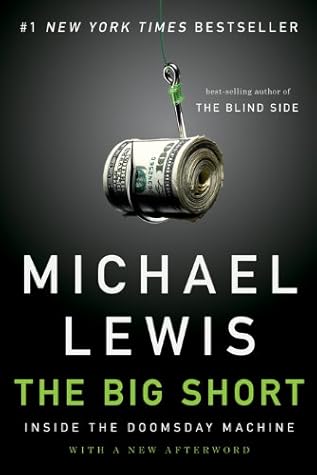More on this book
Community
Kindle Notes & Highlights
These people whose job it was to allocate capital apparently didn’t even know how to manage their own.
And he explained that they avoided free checking because it was really a tax on poor people—in the form of fines for overdrawing their checking accounts. And that banks that used it were really just banking on being able to rip off poor people even more than they could if they charged them for their checks.”
“That’s when I decided the system was really, ‘Fuck the poor.’”
A credit default swap was confusing mainly because it wasn’t really a swap at all. It was an insurance policy, typically on a corporate bond, with semiannual premium payments and a fixed term. For instance, you might pay $200,000 a year to buy a ten-year credit default swap on $100 million in General Electric bonds. The most you could lose was $2 million: $200,000 a year for ten years. The most you could make was $100 million, if General Electric defaulted on its debt any time in the next ten years and bondholders recovered nothing.
If you wanted to predict how people would behave, Munger said, you only had to look at their incentives.
the pay-as-you-go credit default swap. The buyer of the swap—the buyer of insurance—would be paid off not all at once, if and when the entire pool of mortgages went bust, but incrementally, as individual homeowners went into default.
the synthetic subprime mortgage bond–backed CDO, or collateralized debt obligation. Like the credit default swap, the CDO had been invented to redistribute the risk of corporate and government bond defaults and was now being rejiggered to disguise the risk of subprime mortgage loans. Its logic was exactly that of the original mortgage bonds. In a mortgage bond, you gathered thousands of loans and, assuming that it was extremely unlikely that they would all go bad together, created a tower of bonds, in which both risk and return diminished as you rose. In a CDO you gathered one hundred
...more
The CDO was, in effect, a credit laundering service for the residents of Lower Middle Class America. For Wall Street it was a machine that turned lead into gold.
When Mike Burry bought a credit default swap based on a Long Beach Savings subprime–backed bond, he enabled Goldman Sachs to create another bond identical to the original in every respect but one: There were no actual home loans or home buyers. Only the gains and losses from the side bet on the bonds were real.
In Eisman’s view, the unwillingness of the U.S. government to allow the bankers to fail was less a solution than a symptom of a still deeply dysfunctional financial system. The problem wasn’t that the banks were, in and of themselves, critical to the success of the U.S. economy. The problem, he felt certain, was that some gargantuan, unknown dollar amount of credit default swaps had been bought and sold on every one of them.


